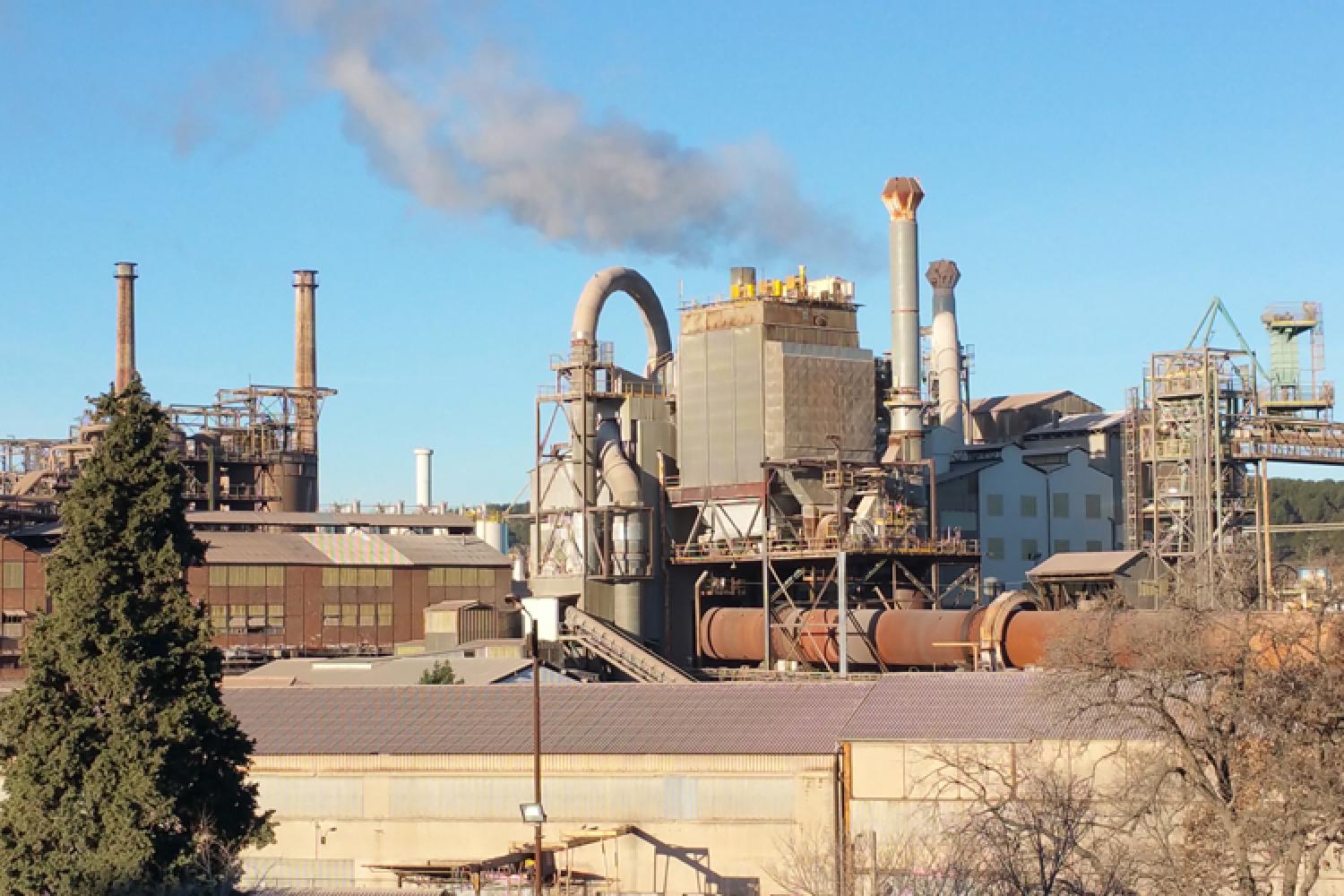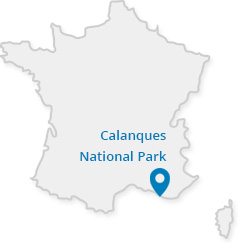1966: the origins of the Altéo issue
Since 1966, the Cassidaigne underwater canyon (now part of the National Park's marine core) has received industrial waste from the Péchiney factory based in Gardanne, specialising in alumina production. These residues, transported by a 47-kilometre-long pipeline on land and at sea, have a strong red colouring due to their iron content: they are therefore known as "red mud".
From the very first time the discharge took place, the issue of red mud was divisive. While the company claims that the discharge presents no risk, scientists and members of civil society point out the impact of red mud on underwater fauna and human health. Despite the debates and denunciations, nearly 30 million tonnes of sludge were discharged into the sea until 2016.
2012: the National Park inherits the "red mud" issue
When it was created in 2012, the National Park inherited the thorny issue of the red mud. The institution's management board, made up of a wide range of stakeholders in the region (the State, local authorities, organisations and scientists), had to issue an opinion, either favourable or unfavourable, on renewing the authorisation for the company to continue discharging its effluents into the sea. The ecological stakes were high, but economic and social considerations also have to be taken into account. The Gardanne plant provides many jobs in the region and alumina is a strategic component for French industry.
After a long preparatory period of studies and analyses led by the National Park's scientific council, the management board issued a favourable opinion on the renewal of the discharge. However, this was accompanied by a number of requirements that would enable the input of pollutants into the sea to be greatly reduced and brought into compliance with French, European and international standards by 2021.
Although the deliberation of the National Park's management board caused misunderstanding among some members of the public when it was published, it nonetheless represents a historic step forward on the issue. This decision also illustrates the "National Park" method: making the protection of biodiversity a priority, while remaining open to the social and economic issues of the territory.
2016: the end of red mud in the sea
In December 2015, at the end of a long administrative process, the Prefect of the Bouches-du-Rhône signed an order imposing a new framework on Altéo, the current operator of the Gardanne plant. This order, which takes up the prescriptions of the National Park's management board, imposed, as of 1 January 2016:
The cessation of the discharge of red mud at sea on 1 January 2016 in favour of a liquid discharge;
- A reduction of more than 90% of the main contaminants (lead, cadmium, mercury, iron, etc.);
- A major monitoring and study programme to be implemented by the industry to monitor the composition and impact of the new discharge on the marine environment;
- The creation of a Monitoring and information committee on discharge in the sea (CSIRM). The purpose of this body, which is independent of the company, is to monitor and provide a critical analysis of the monitoring studies carried out by Altéo and to inform the public about the exact nature and impact of the new discharge and the measures implemented by the company to further reduce pollution.
Since the adoption of the decree of December 2015, the quality of the discharge has been monitored thanks to numerous self-checks carried out by the manufacturer and supervised by the State services. Unannounced checks are also carried out by the DREAL. All the results comply with the requirements of the order.
Storage of residues on land
As the National Park's scientific council pointed out at an early stage, abandoning the discharge of red mud into the sea only shifts the problem to land. The solid part of the discharge, which used to be dumped at sea, is now stored on land at the Mange-Garri site in the commune of Bouc-Bel-Air. It is the fate of this land-based waste that is now the focus of attention, particularly from residents and environmental protection oranisations.
2020: bringing the discharge up to standard
The December 2015 decree allows for a significant improvement in the discharge into the sea, but it also provides for exemptions for 6 parameters: aluminium, iron, arsenic, pH, biological oxygen demand (BOD) and chemical oxygen demand (COD). For these 6 parameters, the industry has an additional period to implement treatment technologies in order to comply with national and European standards. Initially planned for a period of 6 years, the deadline for the derogations has been brought back to 31 December 2019 following legal proceedings filed by several organisations.
Following the implementation of a major investment programme to finance new treatment stages, Altéo's discharge will be in compliance with the standards from December 2019 for 4 of the 6 derogatory parameters: aluminium, iron, arsenic and pH. In order to comply with BOD and COD (parameters mainly used to monitor the quality of watercourses, which are only relatively relevant for monitoring the quality of water in the open sea), Altéo was granted a new deadline by the Bouches-du-Rhône Prefecture.
In September 2020, the inauguration of a new discharge treatment stage will enable the company to comply with national, European and international standards. The objective set for Altéo by the National Park's management board in 2012 has been achieved.
The position of the National Park
The cessation of red mud at sea and the compliance of the discharge with standards are decisive advances obtained in the context of the creation and the first years of the Calanques National Park. However, these advances are only one step. Altéo's industrial waste remains a major pressure on the fragile and protected marine environments of the Calanques. The National Park therefore remains mobilised to obtain new commitments from the company to further improve the discharge into the sea, or even to cease it. Following the recent upgrading of the discharge, the management board is preparing a new motion to specify its expectations of the manufacturer.
The mobilisation of the National Park also includes a significant amount of effort to facilitate the work of the CSIRM on the impact of liquid waste on the marine environment.
The National Park also participates in the Site Monitoring Committee (CSS). This body, created in 2016 by prefectural decree, allows the various stakeholders (the manufacturer, administrations, organisations, inhabitants) to discuss the life and future of the industrial site. Annual visits to the Gardanne site by the National Park's management board are also organised each year to review the progress of the technological solutions developed to improve the discharge into the sea.
Mobilisation by organisations and civil society
The Calanques National Park is not alone in demanding improvements from the Gardanne industrial plant. In particular, residents and environmental protection organisations have filed lawsuits to demand a reduction in the exemptions from which the company benefits and the completion of an impact study of the waste on land.





 Links
Links